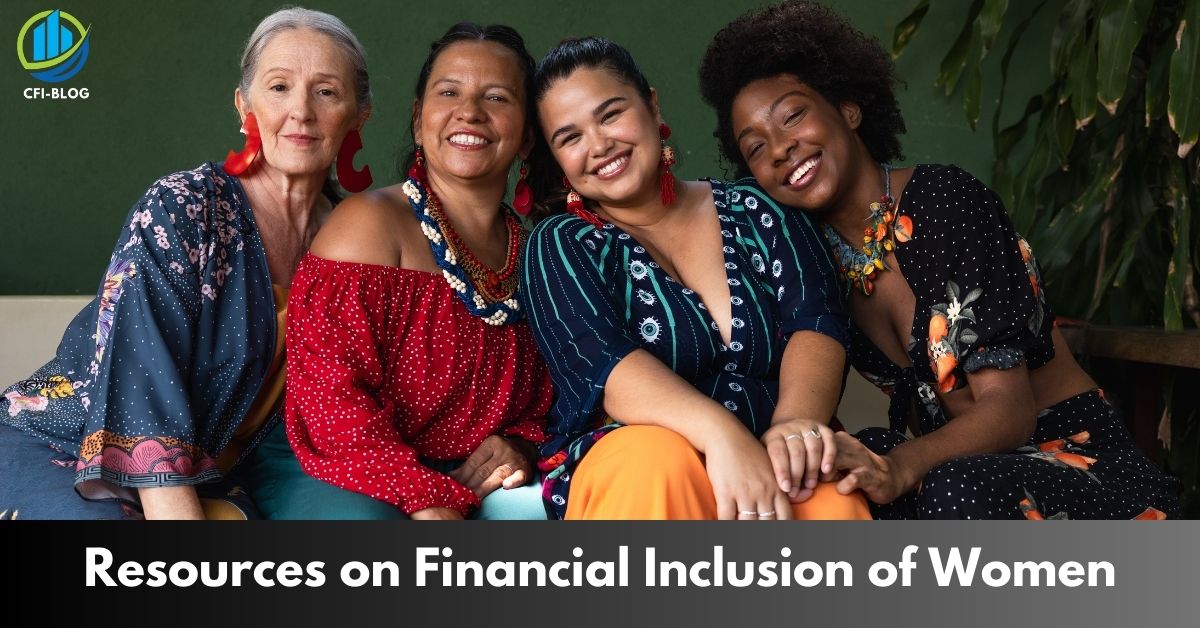Financial inclusion is really important for a country’s overall development. According to reports almost more than half of the population of developed countries is still unbanked. A big reason behind this is the barriers that are present against financial inclusion. Financial inclusion should not only focus on men it should equally include women as well.
Around 63% of people who are unbanked are women. So it is high time that women need to be included in the financial system. This can be possible through financial education; awareness leads to positive change. So, let us see why financial inclusion is important for women and how financial institutions can reduce the barriers to financial inclusion for women.
What is Financial Inclusion?
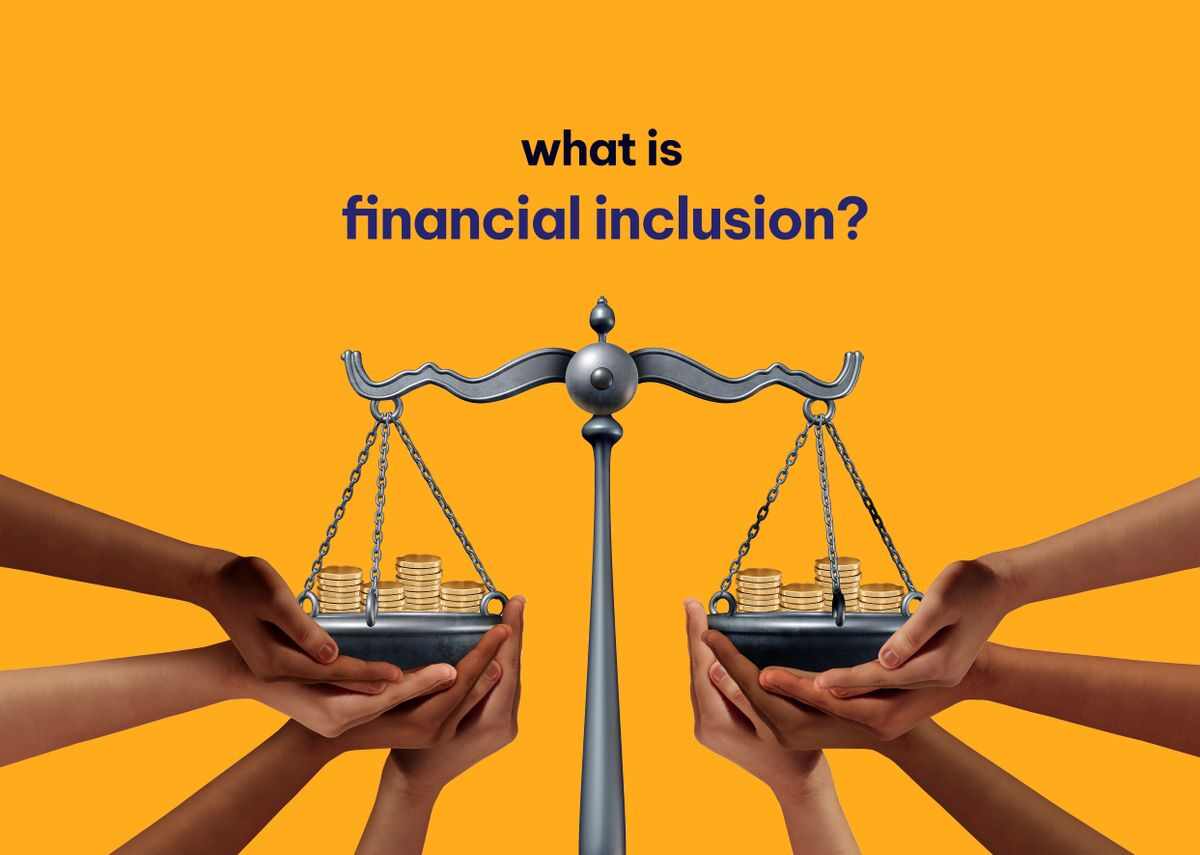
Financial inclusion means including everyone in a financial system by making it more accessible and affordable. People should be included in the financial system despite their income, net worth, etc. Through financial inclusion, small emerging businesses are also allowed to thrive and become huge. Financial inclusion works by removing the obstacles any company or a person is faced with while entering into a financial ecosystem. By being a part of this ecosystem, any entity or a person gets financial assistance and education which helps them to grow and live sustainably.
According to the World Bank, financial inclusion helps in making day-to-day living easy. It ensures any individual or a company by getting them covered from any kind of financial instability. So, for any kind of long-term goal or in times of emergencies you won’t have to worry as you will have the support of any financial institution.
When you are a member of any financial institution, you can have access to a credit card, debit card, savings account, and many kinds of insurance. These can be used in helping you in storing, spending, and investing your money. If you are wondering, can bank accounts save women’s lives violence against women and financial inclusion? Yes, bank accounts have other features also other than just storing money. You can use the help of loans to expand your business, pay for your college, buy a home, etc. By using all these facilities anyone can have a stable financial life and reduce stress in life.
The reason why some people are excluded or are not aware of the benefits of the financial system is that there are various barriers to financial inclusion, and these barriers are there for a long time. However, with developments in technology the problems of financial inclusion are being solved, with the introduction of fintech companies, more and more people are enjoying the benefits of financial institutions.
Traditional financial institutions didn’t have the required feature that could include every people; it was not convenient for people living in remote areas to be a member of a bank. Traditional banks would usually charge high-interest rates, which would include maintenance charges, card charges for using an ATM card, etc.
With the increase in financial technologies (fintech) companies it is easier for people to get connected with banks, they can transfer money without going to a bank, and they can use it while shopping. It has made all financial products more accessible to common people, as these companies do not charge any extra money for their services it has worked as a boon for low-income individuals.
Nowadays, cashless payments are becoming more and more popular, and due to this people who were excluded from the financial system for convenience reasons have now become a part of fintech companies that help them achieve what they were missing in a more accessible way. The new wave of partnership models between banks and fintech startups had made the process inexpensive, leading to crowdfunding and social lending as a way to collect funds.
P2P lending has helped a lot of small business owners to take up loans; they would often get rejected by traditional banks for not having a credit history. P2P lending has solved these problems, as owners can collect funds for their businesses at an affordable interest rate. Microlending led by many microfinance institutions also provides affordable loans that help emerging businesses. They not only provide funds, but they also intend in providing financial education on how to use funds to their maximum potential.
However, there are still people in remote rural areas that have not yet been included in our financial systems. Developed countries like the U.S.A also have a significant number of unbanked people. An initiative is being launched by the World Bank, Universal Financial Acess 2020, which aims to include over 1 billion adults into a financial system. They will have access to an ATM card and a savings account, and they can send and receive money. They plan on making the whole operation a success, as it will significantly reduce the number of adults that do not have any financial access. The whole unbanked population of the world comes to around 1.7 billion as per the reports by the Word Bank.
Barriers to Financial Inclusion
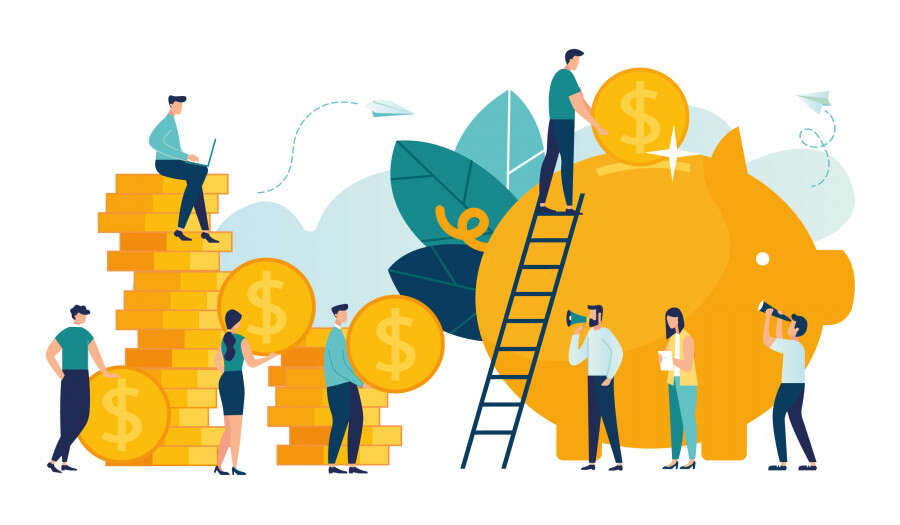
There are various barriers to financial inclusion, the main would be extreme poverty. If people do not have a stable source of income or they don’t have enough money, why would they require any kind of financial system? Other than this people having low wages find it extremely hard to afford the expenses of any financial institution. Financial institutions charge fees in the name of cash withdrawals, maintenance, etc. Poverty is spread all over the world, it is not a problem in a single country.
In the case of opening an account in any bank, the respective person should have every kind of document, that the bank officials use to verify the very person. However, some people do not have documents due to that they get rejected straight away. This kind of problem is very common in rural areas where people do not have all the documents that are needed for verifying in banks. The problems do not stop here. Many banks do not have zero balance accounts as an option; in those banks, an individual should open an account with an amount that is huge for low-income individuals.
However, in India and other countries as well to tackle this problem government has launched schemes that allow individuals to open zero-balance accounts. This step is taken by the government to expand financial inclusivity in their country. Now remains the problem of awareness, people are not aware of the advantages a financial system can provide which is why they don’t join it. They prefer to store money within themselves as they do not know that they can gain interest in their savings. Well, these are some of the reasons why financial inclusion faces hindrances.
What are Its Benefits?
There are many benefits to financial inclusion apart from having access to basic financial features such as a credit card, debit card, or savings account. There are other benefits as well. We have listed down some of the benefits:
1. Household Income
If you are a member of any financial institute you can get financial assistance such as loans or insurance for your business. This will result in the overall growth of your business. When your business grows you will earn more which help you cover your household expenses easily. Having insurance for any asset gives you assurance, as you will know in case of any emergencies the insurance company will cover the cost of that asset. With all this support you can lead a more stable financial life.
2. Build Assets
With the help of financial institutes, you can take home loans or auto loans. This will allow you to purchase assets, which would be hard for you to buy single-handedly. You can purchase a piece of land and construct your house on it. However, one must keep in mind that these are a type of loan that you need to pay back, so you need to be careful about the loan amount. You should always compare several banks before applying for any kind of loan to get the best interest rates.
3. Increase Security
According to bank reports, about 20% of the population of developed countries store money in financial institutions for safekeeping, and the rest of the population store money in an informal way. Some store it under floorboards, above the ceiling, etc. Now, having money with yourself is really dangerous as it can get stolen, and your family can get hurt. Some of them buy jewelry with their savings or buy assets.
However, investing money is not a bad idea but sometimes you may require money and it may be hard to sell assets at that time. It is always better to store money in your bank accounts, banks are safer and you can earn interest on your savings. If you want to know how unstable life can be if you do not possess financial education you can look at our report on US Financial Diaries project highlights the precarious financial state of US families.
4. Reduce Vulnerability
By using the services offered by financial institutes Parents are able to pay for their children’s college. As we all know tuition fees are very expensive, and your family might not have that many funds to finance it. You can take up a student loan that will cover your college fees, and then you can pay back the loan after you get a job. Due to this students coming from poor families get an opportunity to study at top universities. With this students can better their family’s standard of living and help them come out of poverty.
5. Create Jobs
Service offered by financial institutions helps small emerging businesses to grow. If a company grows then it can recruit more employees. Supporting emerging business financial institutions not only helps them grow but also boosts the economy of a country overall. Youths that are unemployed get jobs, and the revenue generated by the business adds to the GDP of a country. There are many case studies that show the business case for youth financial inclusion.
Why financial Inclusion is Important for Women?
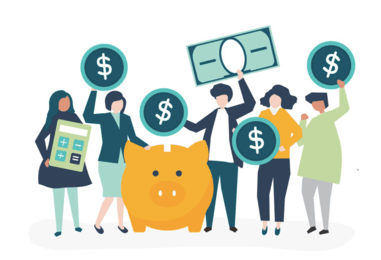
Financial inclusion is very important in the case of women, as they have always been neglected by the mainstream financial system. It doesn’t matter if a woman is employed or is a homemaker, everyone should have access to basic financial features. This will allow women to live freely and with dignity. With financial inclusion, we can hope that gender equality can be maintained and the gap can be reduced.
Just with the expansion of financial inclusion, there will be no impact on our society, it should reach equally to both men and women. With financial access, financial education also needs to be propagated, only then women will know how to use the financial system to its full potential. To make use of a savings account, credit card, and debit card financial education is needed. This will allow women to save money, and generate income which will be beneficial in times of rough financial situations.
If we look at the report by World Bank, less than half of all adult women work, compared to 75% of men. This shows that there is a huge gap in gender equality in employment. Most of the working women work in informal sectors, which exploit them by paying them less for what work they do.
Due to Covid-19, a huge number of women employees were affected, and they lost their jobs. Women do not have the same convenience in using any financial product. A survey was done by some financial institutions before the pandemic outbreak, and the survey showed that 56% of the world’s unbanked population are women. Women do not take insurance as compared to men due to a lack of awareness. This is harmful to women-based businesses as they wouldn’t get financial support in case of any economic crisis.
According to recent studies, wages earned by women and girls are far less than money earned by men and boys which is the reason why women are pushed into poverty. According to reports published by the U.N. Women and the World Bank reveal that women between the age of 20 to 34 are poorer in comparison to men in that age bracket. In the case of any divorce or widowhood, women are affected the most, women in the age bracket of 18 to 49 who are divorced or widowed have twice as low money as divorced men.
With the expansion of financial inclusion women get positive results as they will get the necessary financial support in times of rough situations. Traditional Banks have always targeted men due to their businesses and have neglected women who work in informal sectors.
However, many MFIs (micro-financial institutions) have risen to power, and target women entrepreneurs, they provide them with financial assistance and financial education which helps them grow their businesses and help them become self-sufficient. A similar example can be seen in the country Bangladesh, we can see how Micro financial institutes have supported women, to know more look at our report on credit shield insurance piloting microinsurance products in Bangladesh.
Lastly, it is been seen that women invest their income in household activities more than men, this shows if women entrepreneurs grow, there will be a positive impact on local communities and society as a whole.
How Does Financial Inclusion Help Women?
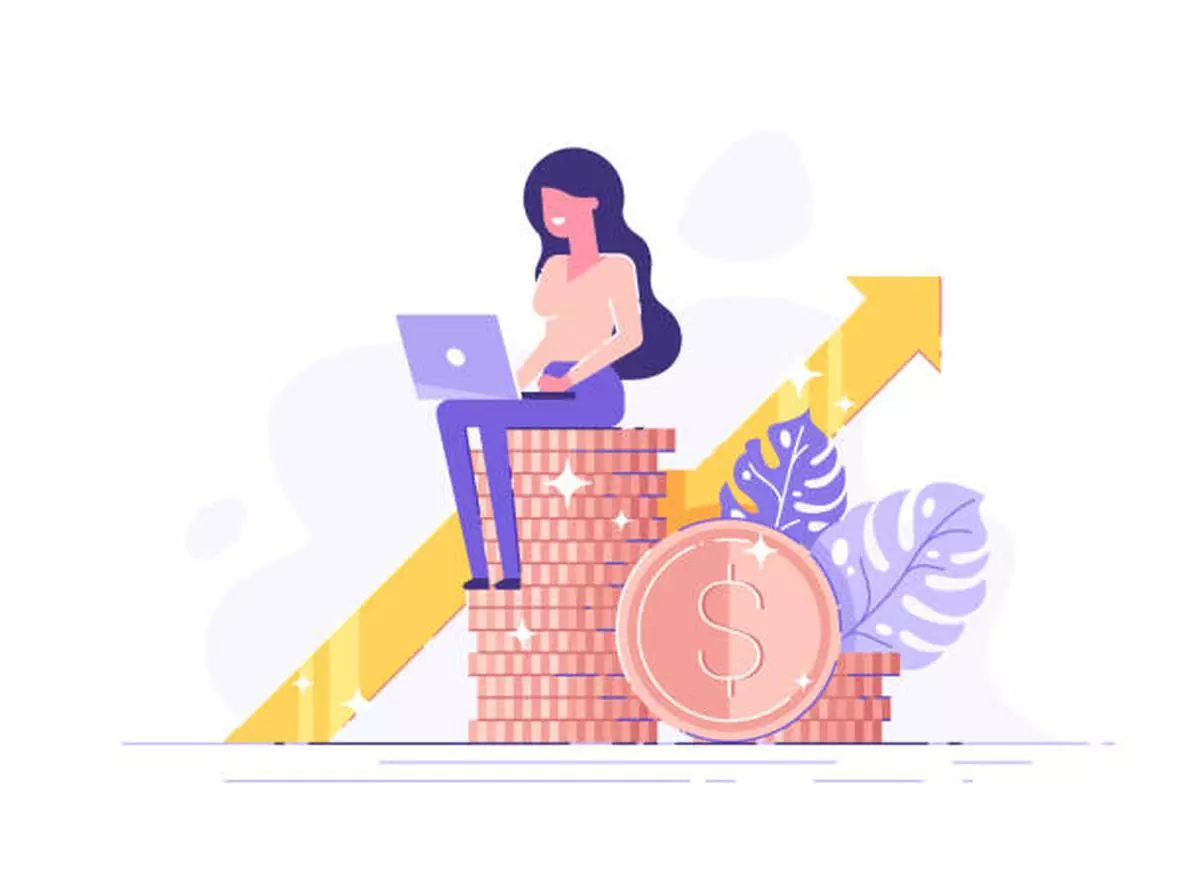
The growth of Financial inclusion has helped a lot of women get basic access to financial products, this is really important to reduce the gender gap that is present in our financial system. Here are some ways that financial inclusion has helped women in getting financial gender equality.
1. Financial Education: Financial education means a basic understanding of how to handle credit, and how to use financial products. One must have knowledge of saving, borrowing, investing, and spending money. It is necessary for women to know all these to use the financial products provided by financial institutions to earn money. Women entrepreneurs should know how to use loans and insurance. Loans will help them grow their business and insurance will provide financial support in terms of economic crisis.
MFIs present all over the world expand financial inclusion, they provide micro financial loans and insurance that help small-scale businesses. Recently they have targeted women, and entrepreneurs, helping them by providing affordable loans and key business insights on how to run businesses.
2. Use of Microfinancing: Micro financial institutes present in rural areas provide affordable loan and insurance options for the local people. They are now focusing on diversification of their financial assistance, and they are planning to reach new market segments that are run by women. This will help reduce the gender gap.
3. Promoting Women Entrepreneurship: With the increase in financial inclusion, women are being part of financial institutions. By taking up business loans many women are setting up their own businesses. Some MFIs also give financial lessons that include how to run a successful business. As small enterprises are growing in number it is even generating employment. MFIs provide microloans that help women in growing their businesses.
4. Equal Wages for Women: Financial education has made women aware of the injustice that was being done to them. They understood they used to get low wages in comparison to men. Financial education has also enabled women to take better care of their income. They now save money and invest a certain amount to get returns. Studies have been conducted on how women are being employed in garment industries this model is followed in other countries as well. Overall, with awareness women themselves are demanding equal wages, and they are accepting jobs that value them.
5. Supporting women refugees: Various programs have been launched by financial institutions to incorporate women who were displaced from their workplace, these programs give financial assistance to low-income women. They are provided with financial products and jobs. Programs launched in Jordan are a plain example of how financial institutions help refugee women. Micro Fund for Women (MFW) has come up with these programs that primarily target women. They are in the works to expand their portfolio, and they aim to help refugee women in other countries.
Some of the Resources That Focus on Financial Inclusion
As we have mentioned above how financial inclusion in women can reduce the gap in gender financial equality, let us see some of the resources that provide necessary details to us about the inclusion of women in the financial system.
1. Findex Notes: Women and Financial Inclusion
This resource contains data from the Global Findex Database, based on the data the World Bank and Bill and Melina Gates Foundation have created a small document that shows how many numbers of women use financial services globally. The document contains a piece of brief information about the impact of financial inclusion on women. This data gives us a clear picture of the gap that was still present between women and men. The document takes into account, the number of women account holders, how many of them are using credit and debit cards, and is the barriers to women’s financial inclusion are reduced.
2. Promoting Women’s Financial Inclusion: A Toolkit
Departments under the German Federal Ministry for Economic Cooperation and Development like the DFID and GIZ prepared a toolkit that was made for policymakers, NGOs, and financial donors. These policymakers want to learn about financial inclusion in women so that they can design programs targeting women.
The toolkit has data such as barriers to financial inclusion, and factors that contribute to financial inclusion for women, these data can guide these NGOs and policymakers in formulating perfect policies that will help women use financial products more effectively. In this toolkit, the data is presented categorically, this will help in making policies in a more personalized way. The impact will be huge as every type of financial problem will then be addressed.
3. Ready for Growth: Solutions to Increase Access to Finance for Women-Owned Businesses in the Middle East and North Africa
This resource shows the impact financial inclusion had on Middle Eastern and North African women. The report was created based on the survey of 430 women present in those areas. The reports showed some shocking results, around 41% of women face difficulties in accessing financial services, 67% cited high interest rates as the problem and 36% of women stated that lack of collateral was their main problem for not accessing financial services.
The report even stated that most women do not want only financial assistance they require business lessons so that they can grow their businesses. Based on the report it can be said that financial institutions there should provide personalized financial services that would reduce some of the barriers to financial inclusion.
4. Women and Financial Literacy: OECD/INFE Evidence, Survey, and Policy Responses
This report was published by the OECD International Network on Financial Education, the report states that financial education is less in women than in comparison to men. There is a big gender gap in financial literacy, and due to this women are less confident and have less impact on any country’s economy. In addition to this, women present in households are not included in any key financial decisions that are taken.
In fact, there are many problems with a lack of financial literacy in women, such as women consist a huge number of our population if they are not financially aware, they can be financially exploited by others. The report does not only contain the problem, but it also has necessary steps that can be taken by financial institutions to increase financial literacy in women. The report has been prepared by examining the existing programs that focus on financial inclusion in women.
5. Unlocking the Potential: Women and Mobile Financial Services in Emerging Markets
This report focused on mobile financial services that are targeting women. The report was prepared by Bankable Frontier Associates, the report consists of data that was collected by BFA in countries like Kenya, Indonesia, Pakistan, and Tanzania. The report focuses on the impact mobile financial services have brought on the women living in these countries.
Around 63% of women considered saving groups as a secure place to store their money, while around 86% of women considered formal financial institutes as the most secure place to store their money. However, the report aims that more women to use mobile financial services as it is cheaper and more secure in comparison to other financial institutes. As women typically make all the payments related to household activities, mobile financial services can be of great help to them.
Frequently Asked Questions (FAQs)
Q1. What are the financial barriers women face?
There are various financial barriers that women have to face, some of them are:
- Lack of awareness
- Lack of capital
- Lack of employment
- Gender a biased wage system
These are some of the barriers that stop women from getting access to the financial system.
Q2. What is the most important tool for financial inclusion?
The most important tool for financial inclusion is financial literacy, if people are aware of the benefits that they get from financial institutes then only people will want to become a part of the financial system.
Q3. What is the importance of the financial empowerment of women?
Financial inclusion in women is very important if women are aware of financial services they can become confident and use their abilities to boost a country’s economy. With the empowerment of women, the financial gap between the two genders will significantly reduce. The major method by which women can be financially included is through financial education.
Bottom Line
With the increase in financial inclusion, financial institutions should understand that women also need to be included equally as compared to men. There are many financial barriers to financial inclusion for women, some of them include, lack of awareness, poverty, accessibility, etc. However, with the rise of fintech companies, financial services have become cheap and more accessible for people.
Financial inclusion for women is really necessary for bridging the gap between both genders. Women are half of our population; if they are kept neglected from mainstream financial services, it will be a huge loss for the country. Women entrepreneurs contribute to a large part of our country’s economy. They generate employment for youths. There are several resources that give a detailed explanation of how financial inclusion has helped women, some of the major resources have been listed in this article.
Author Profile
- Elizabeth Jones is one of our editorial team’s leading authors on credit card offers, services & more. With over two decades of experience in the consumer credit industry and as a nationally recognized credit expert, Elizabeth provides in-depth analysis of both traditional & alternative forms of credit. Elizabeth regularly appears on many major media outlets including NBC Nightly News, Fox Business Network, CNBC & Yahoo! Finance. She is also a frequent contributor to Forbes Magazine. As a highly appreciated author for our exclusive Editorial Team, Elizabeth strives to provide readers with a trustworthy advice on how to manage their credit accounts while staying informed on the latest offers in the marketplace.
Latest entries
 BlogSeptember 26, 2023How to Block Payments on Cash App: A Comprehensive Guide
BlogSeptember 26, 2023How to Block Payments on Cash App: A Comprehensive Guide BlogSeptember 21, 2023How to Add Money to Apple Pay: A Comprehensive Guide
BlogSeptember 21, 2023How to Add Money to Apple Pay: A Comprehensive Guide BlogSeptember 20, 2023PayPal Gift Cards: Everything You Need to Know
BlogSeptember 20, 2023PayPal Gift Cards: Everything You Need to Know BlogSeptember 20, 2023How to Add an Apple Gift Card to Wallet: A Step-by-Step Guide
BlogSeptember 20, 2023How to Add an Apple Gift Card to Wallet: A Step-by-Step Guide

